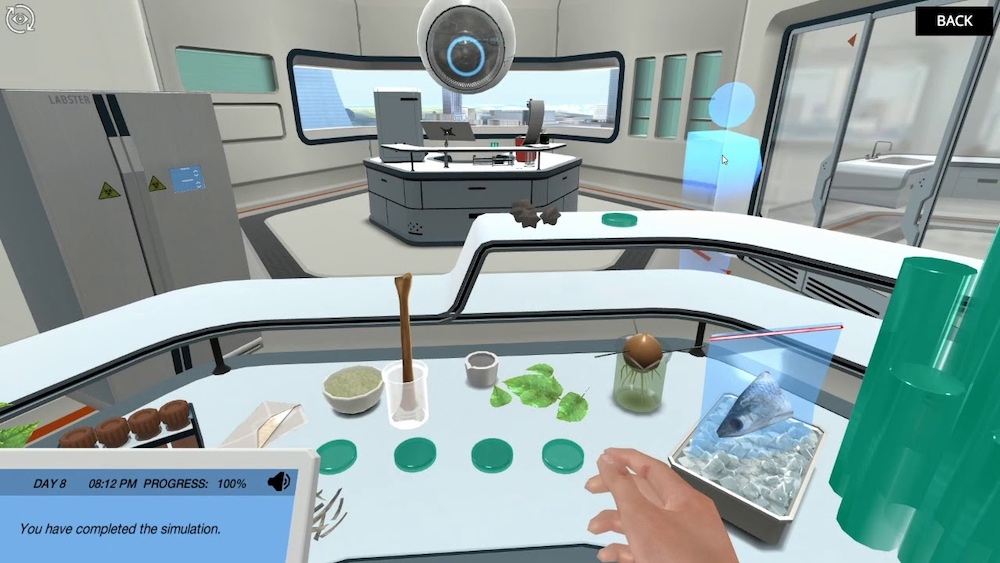Labster Medical Lab Simulation Technology Now Available on 23 California State University Campuses
Labster’s fully interactive virtual simulations are designed to stimulate learners’ natural curiosity and highlight the connection between science and the real world. Learners perform realistic experiments, learn key science concepts, and practice their skills in a risk-free learning environment. According to Labster, numerous research studies show that the company’s simulations significantly improve learning outcomes and knowledge retention while simultaneously increasing learner engagement and participation in STEM curricula. California State University learners can now experience Labster healthcare simulation technology after the educational facility signed a license for use in November 2020. This licensure gives each of CSU’s 23 campuses the option to use any of Labster’s 159 virtual laboratory simulations.
The institution hopes that the availability of this software technology will help CSU faculty enable students to experience scientific inquiry and discovery. Being able to deliver these experiences virtually has become increasingly important as in-person offerings continue to be limited at physical schools as a result of the COVID-19 pandemic. Therefore, the Chancellor’s Office is requesting individual campuses to opt-in to access Labster to better target individual educators’ needs of virtual lab simulations, and various teacher training resources that can support their students’ transition to remote learning during the upcoming semesters.
“Labster’s virtual lab simulations are available for over 20 disciplines such as biology, chemistry, physics and engineering,” Leslie Kennedy, senior director of Academic Technology Services at the CSU Chancellor’s Office, said in a press release. “The software supplements faculty’s virtual instruction, enabling students to continue to achieve their higher education goals.”
Sponsored Content:
Since the licensure, Labster has dedicated a page on the company’s website to California State University instructors who wish to add Labster simulations into their learning management system course. This webpage includes a “Getting Started” video for faculty to learn more about Labster simulations, with more “Getting to Know Labster” resources at the bottom of the page. Additionally, all upcoming live training sessions are listed, as well as recordings from previous sessions.
All of the Labster healthcare simulations extended to faculty and learners by CSU run on regular computers and use 3D animations to simulate the use of sim lab equipment and perform experiments. Labster’s catalog covers topics from acids and bases to wastewater treatment. Course material include chemistry safety, cell respiration, fluorescence microscopy, introductory lab, lab safety, pipetting, RNA extraction, viral gene therapy, tissue engineering and more.
Sponsored Content:
“CSU is an example to many other university systems around the world, and I am thrilled they have seen the benefit that online education technology can play in empowering the next generation of scientists, no matter where they will be this Fall. Our virtual lab simulations will not only help students and educators this Fall through the COVID-19 pandemic, but it will become an essential part of these students’ ability to learn science, in a world-class laboratory environment, from anywhere,” said Michael Bodekaer, Labster CEO and co-founder.
The following webinar recording demonstrates how CSU faculty uses the virtual labs in their courses. During the webinar, Kambiz Hamadan, professor in the chemistry department at California State University San Marcos, and Dr. Cindy Malone, assistant professor in the department of biology at California State University, discuss how Labster is being used to educate their learners. In 2016-2017 Hamadan redesigned a lecture-only general biochemistry course by adding virtual lab activities (designed by Labster, Inc.) and found that certain well-aligned virtual lab activities significantly enhanced student learning of applied skills/concepts and improved student engagement with course content in this non-majors biochemistry course.
More About California State University
California State University is the largest system of four-year higher education in the country, with 23 campuses, 53,000 faculty and staff and 482,000 students. Created in 1960, the mission of CSU is to provide high-quality, affordable education to meet the ever-changing needs of California. Through a commitment to quality, opportunity and learner success, CSU is renowned for superb teaching, innovative research and for producing job-ready graduates. Each year, CSU awards more than 127,000 degrees.
More About Labster
Labster is a healthcare simulation company that develops advanced medical lab courses founded on mathematical algorithms that support open-ended investigations. The company’s simulated lab courses combine the open-ended investigations with gamification elements such as an immersive 3D universe, story-telling and a scoring system.
Leveraging technology, Labster creates scalable science training software with increased learning outcomes and motivation. The company’s vision is to truly empower the next generation of educators, medical professionals and scientists to change the world. Labster has come to offer a simulated virtual laboratory with a focus on revolutionizing the way science is taught to learners across the world.
Covering a wide range of science topics, Labster virtual lab simulations offer over 140 simulation courses to meet the specific needs of educators across healthcare simulation. This virtual laboratory network provides a supportive, fully interactive curriculum-based e-tool. WIth this solution, learners can experience life-like challenges in an online environment that simulates reality while prioritizing patient safety.
Learn More About Labster
Lance Baily, BA, EMT-B, is the Founder & CEO of HealthySimulation.com, which he started while serving as the Director of the Nevada System of Higher Education’s Clinical Simulation Center of Las Vegas back in 2010. Lance is also the Founder and acting Advisor to the Board of SimGHOSTS.org, the world’s only non-profit organization dedicated to supporting professionals operating healthcare simulation technologies. His co-edited Book: “Comprehensive Healthcare Simulation: Operations, Technology, and Innovative Practice” is cited as a key source for professional certification in the industry. Lance’s background also includes serving as a Simulation Technology Specialist for the LA Community College District, EMS fire fighting, Hollywood movie production, rescue diving, and global travel. He and his wife Abigail Baily, PhD live in Las Vegas, Nevada with their two amazing daughters.
Sponsored Content:



















